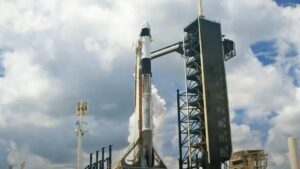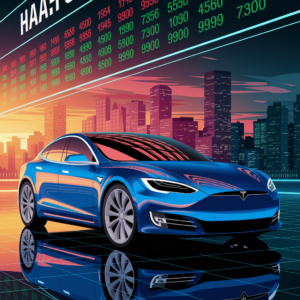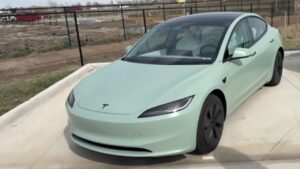On August 4, 2025, Tesla’s board made headlines by granting CEO Elon Musk a staggering $29 billion compensation package, comprising 96 million restricted stock shares. This interim award comes as Musk fights a legal battle over his original 2018 compensation package, valued at $56 billion, which was voided by a Delaware court earlier this year. The new package is designed to keep Musk tethered to Tesla during a pivotal time, but it’s sparking heated debate among shareholders and analysts alike. Let’s dive into the details and what this means for Tesla’s future.

The Context: Why a New Pay Package?
Musk’s 2018 compensation plan, one of the largest in corporate history, was struck down by Delaware Chancellor Kathaleen McCormick, who ruled it unfair to shareholders. The decision left Tesla scrambling to ensure Musk’s commitment, especially as the company shifts its focus from electric vehicles (EVs) to AI, robotics, and autonomous driving technologies like robotaxis. With Tesla facing a 25% stock price decline in 2025 and shrinking EV sales, Musk’s leadership is seen as critical to navigating this transition.
The new $29 billion package requires Musk to remain in a senior leadership role—either as CEO or Chairman and Chief Product Officer—for two years. It also sets an exercise price of $23.34 per share, mirroring the 2018 plan. However, there’s a catch: if Musk wins his appeal to reinstate the original $56 billion package, this new award will be forfeited. Tesla has also announced plans to propose a longer-term compensation package at its shareholder meeting on November 6, 2025, signaling this is a temporary measure to keep Musk engaged.
The Rationale: Securing Musk’s Vision
Tesla’s board argues that Musk’s leadership is indispensable, particularly as the company doubles down on futuristic projects. Tesla’s pivot to AI and robotics, including its much-hyped robotaxi initiative, relies heavily on Musk’s vision and ability to execute. His track record—transforming Tesla into a $1 trillion company at its peak and revolutionizing the EV industry—lends weight to this argument. Supporters among shareholders see the package as a necessary incentive to ensure Musk prioritizes Tesla over his other ventures, like SpaceX, X Corp, and Neuralink.
The board’s decision also reflects a strategic response to the Delaware ruling. By tying Musk’s compensation to stock performance and leadership continuity, Tesla aims to align his interests with those of shareholders while addressing legal uncertainties. If the appeal fails, this interim package ensures Musk remains incentivized; if it succeeds, Tesla avoids double-paying.
The Controversy: Shareholder Pushback
Not everyone is on board. Critics argue that a $29 billion package is excessive, especially given Tesla’s recent struggles. The company’s stock has taken a hit in 2025, with declining EV demand and increased competition from rivals like BYD. Some shareholders question whether such a massive payout is justified when Tesla’s core business is under pressure. The Delaware court’s ruling highlighted concerns about Musk’s influence over the board and the fairness of his original compensation, and this new package reignites those debates.
Opponents also point out that Musk’s divided attention across multiple companies could dilute his effectiveness at Tesla. With ongoing projects at SpaceX, X, and Neuralink, some investors worry that even a hefty pay package might not guarantee Musk’s full focus. The fact that Tesla plans to propose yet another compensation package in November adds to the uncertainty, with critics calling it a sign of reactive governance.
Musk’s Response and the Bigger Picture
Musk, never one to shy away from controversy, has taken to X to defend his compensation, arguing that shareholders—not judges—should decide his pay. He’s appealing the Delaware ruling, framing it as a matter of corporate autonomy and shareholder rights. Musk’s supporters echo this sentiment, pointing out that Tesla’s shareholders overwhelmingly approved the 2018 package, and many continue to back him as the driving force behind the company’s innovation.
The broader context here is Tesla’s transformation into a tech company beyond EVs. With projects like the Optimus humanoid robot and autonomous driving software, Tesla is betting big on Musk’s ability to deliver groundbreaking advancements. The compensation package, then, is less about rewarding past performance and more about securing Musk’s commitment to this high-stakes future.
What’s Next?
As Tesla heads toward its November 6, 2025, shareholder meeting, all eyes will be on how shareholders react to this interim package and the proposed long-term plan. Will they see it as a bold move to lock in Musk’s genius, or an overreach by a board too beholden to its CEO? The outcome of Musk’s appeal in Delaware will also play a critical role, potentially reshaping Tesla’s compensation strategy.
For now, the $29 billion package underscores the high stakes at Tesla. It’s a gamble that Musk’s vision will propel the company to new heights, even as it navigates choppy waters. Whether this move pays off—or fuels further controversy—will depend on Tesla’s ability to execute on its ambitious goals and Musk’s ability to stay focused.
What do you think? Is Tesla’s board right to double down on Musk with this massive package, or is it a risky bet that prioritizes one man over the company’s broader interests? Share your thoughts below!


